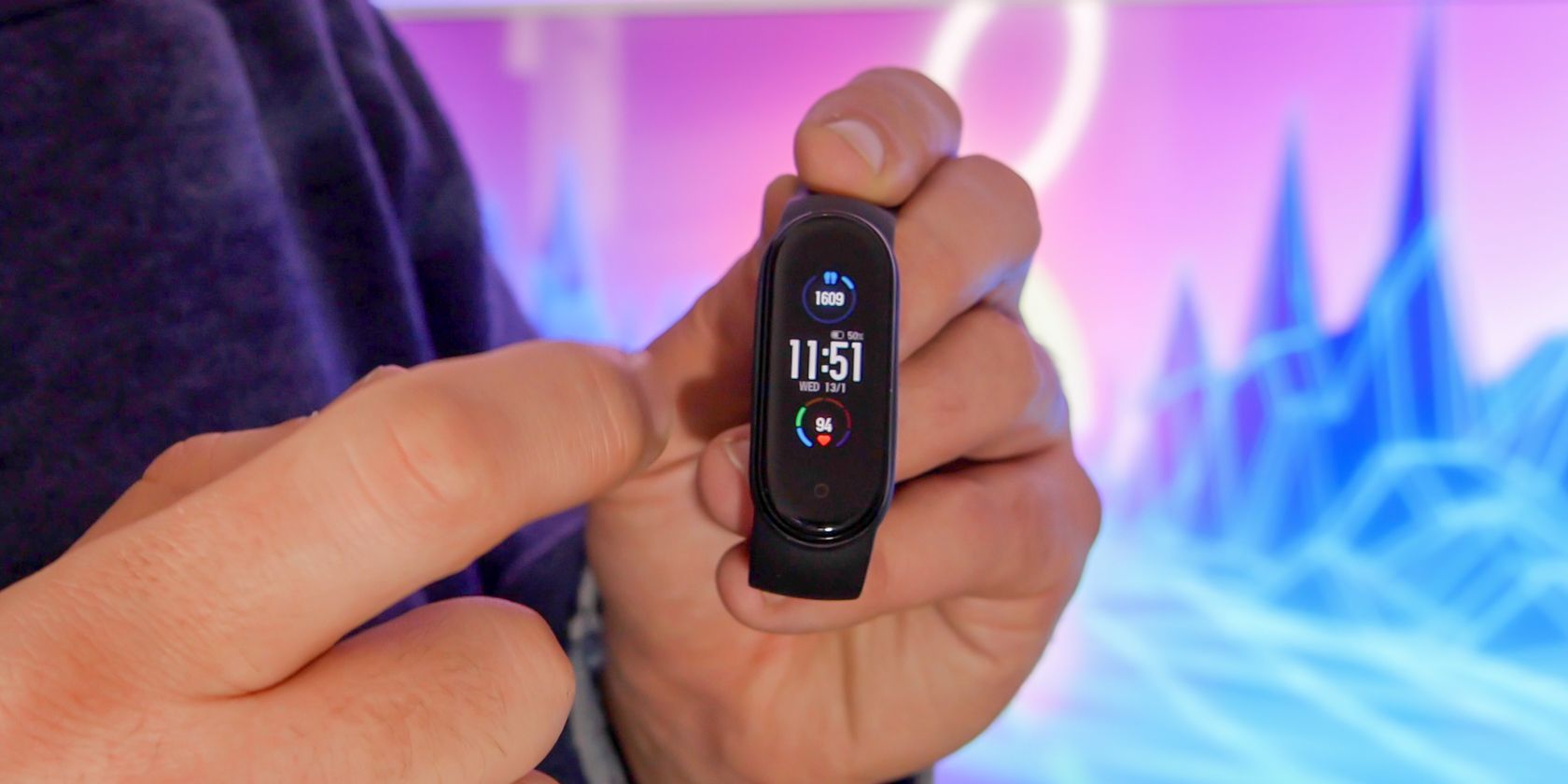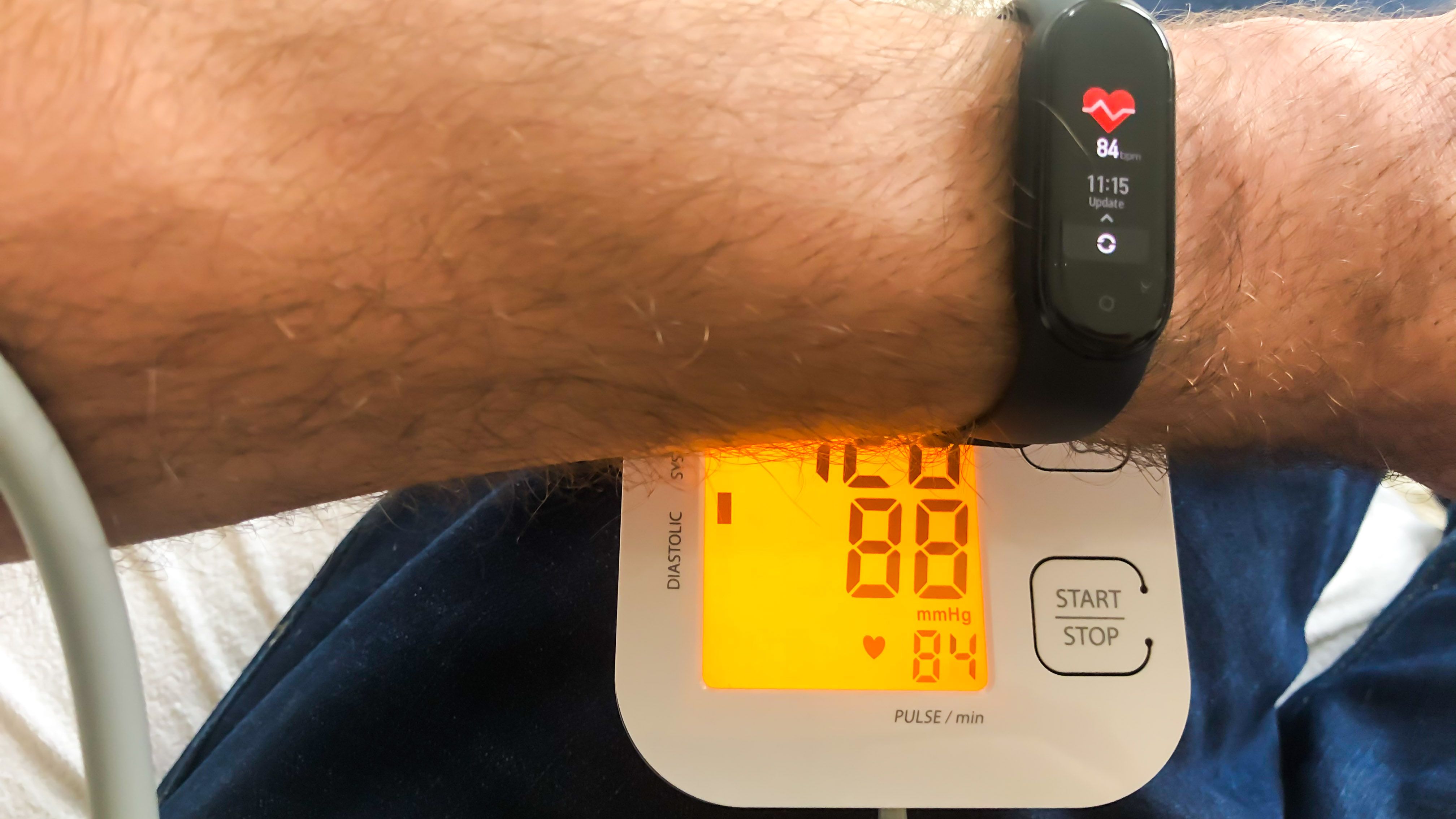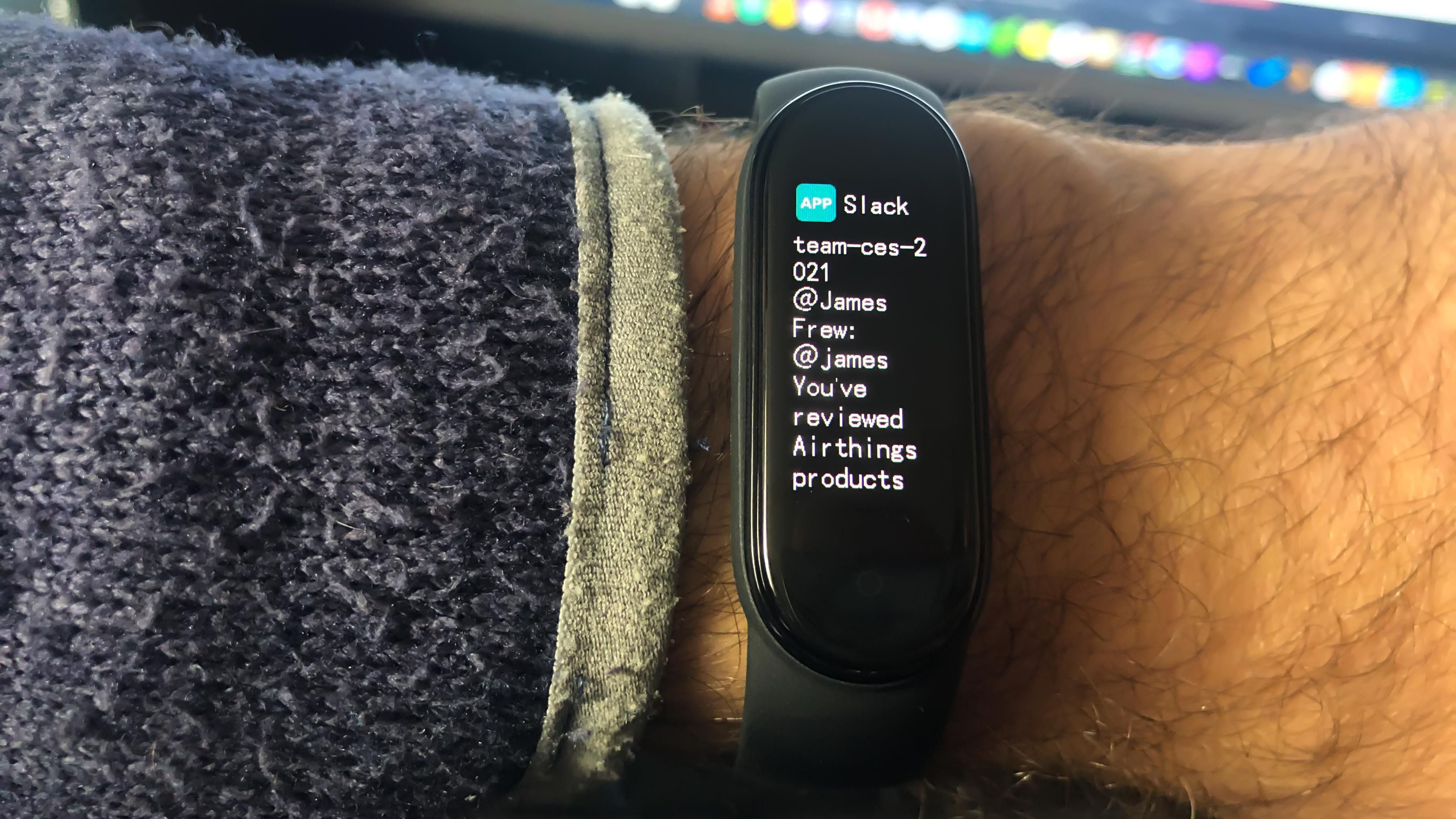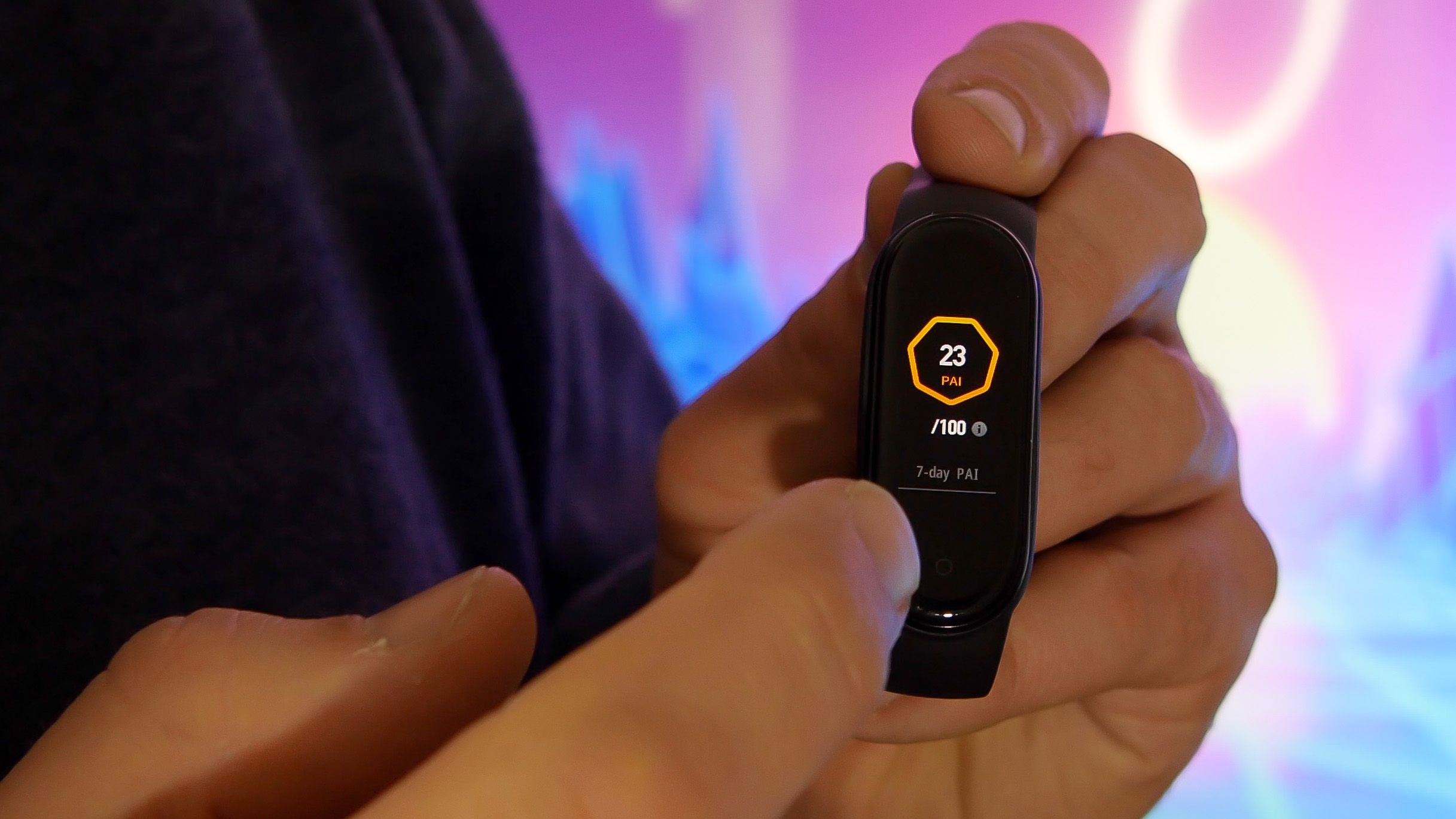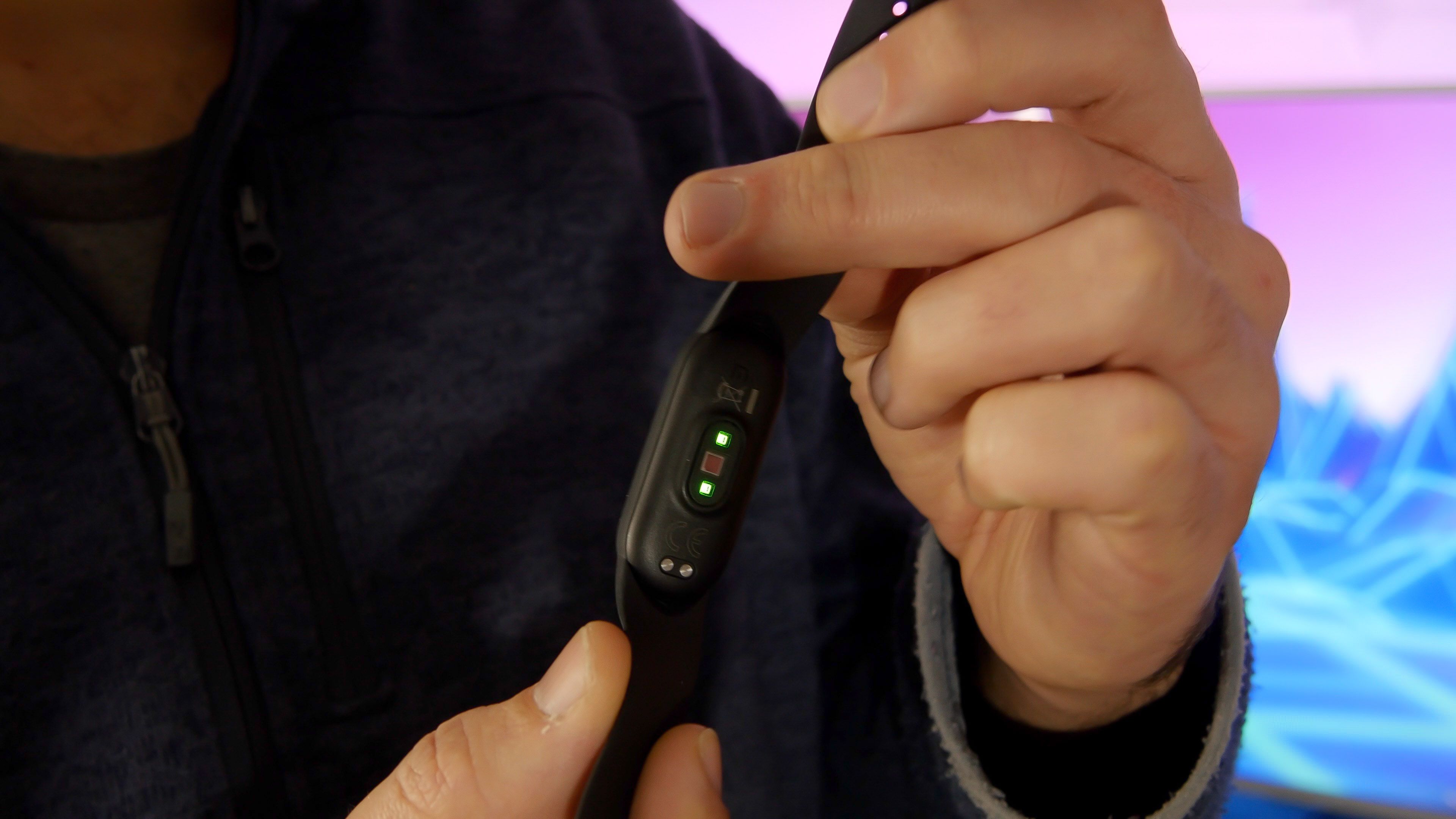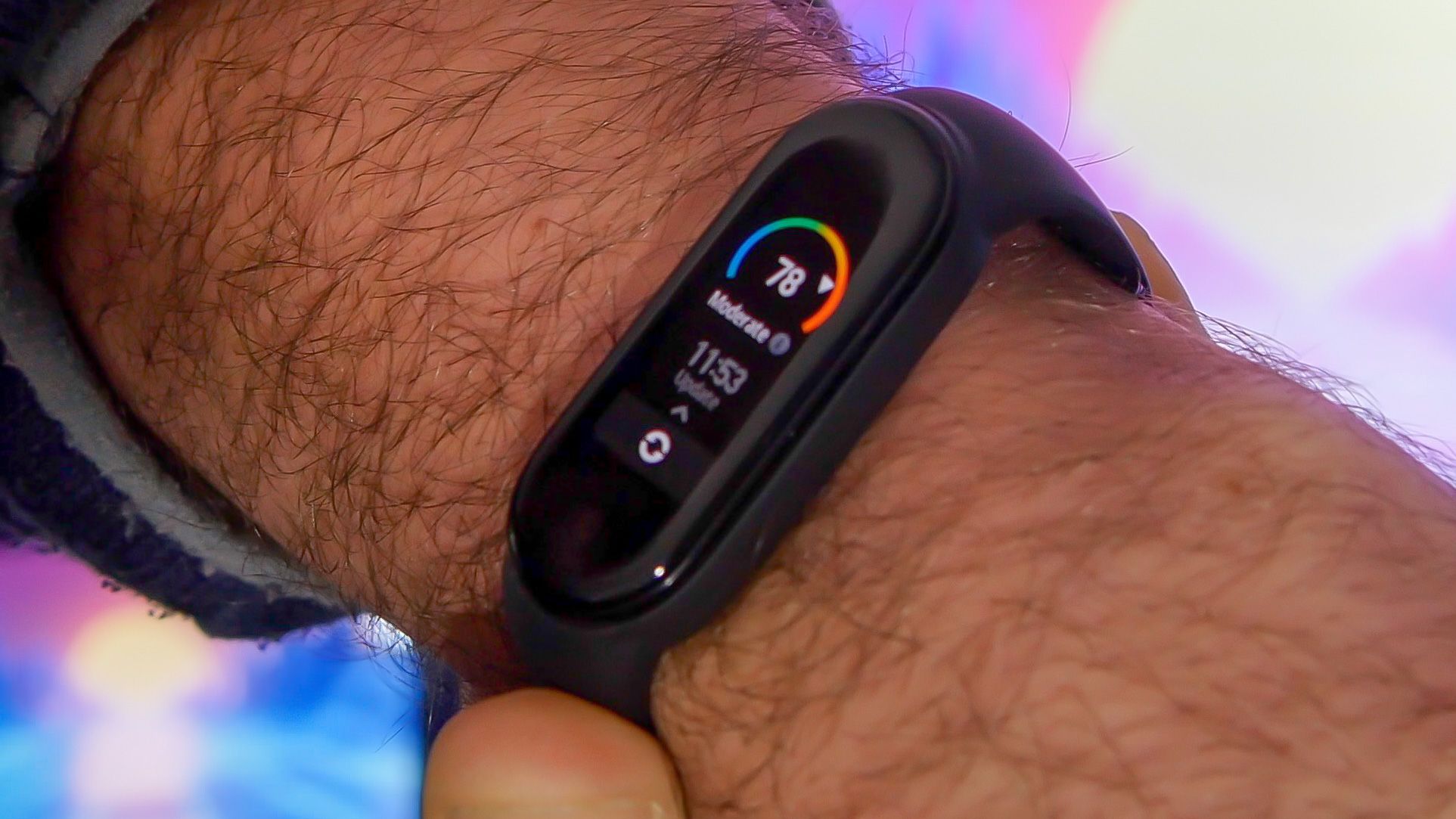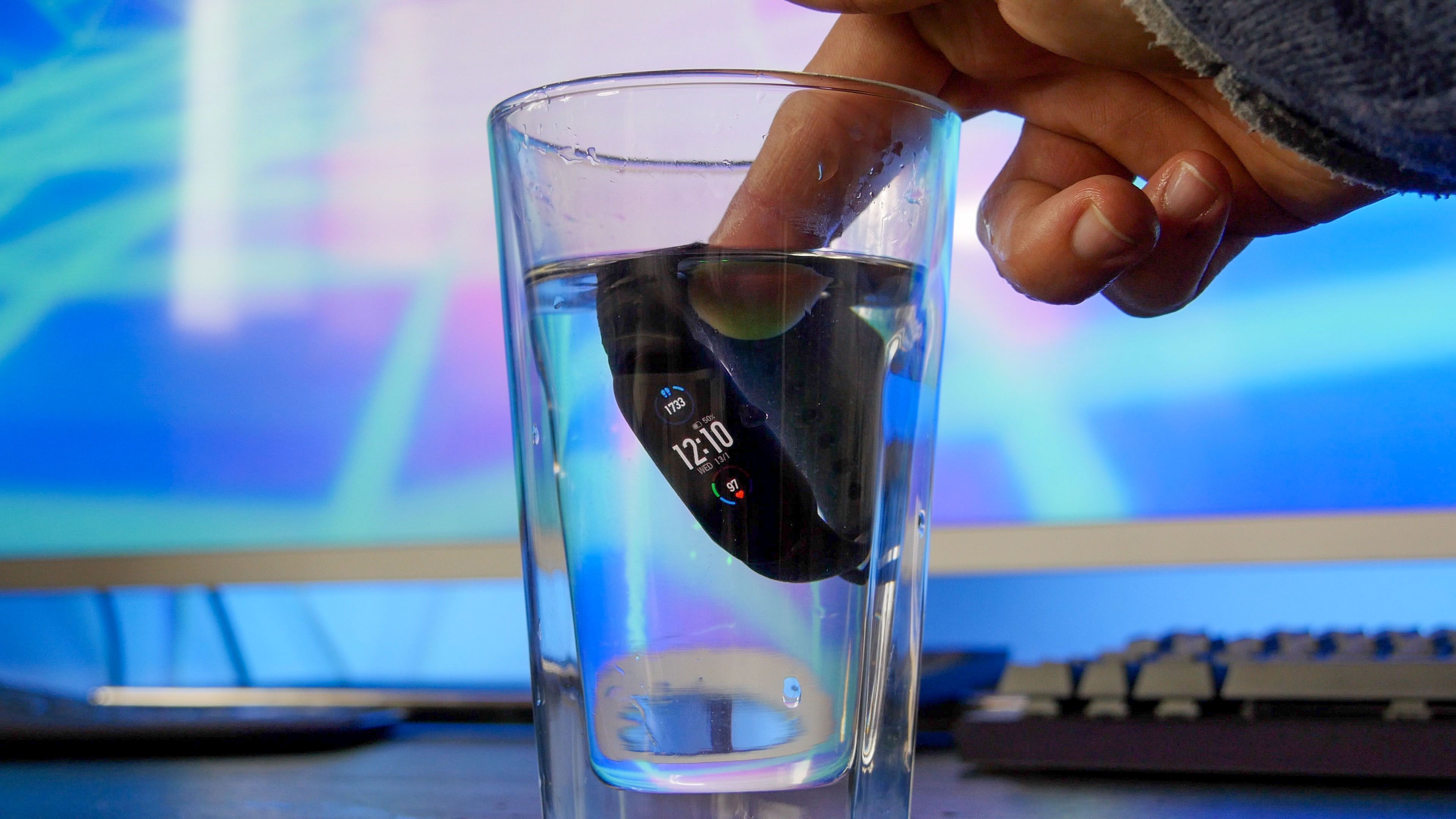Mi Band 5
Incredible value and great battery life even with continuous heart rate monitoring enabled make this the best budget fitness tracking for most people. The PAI scoring system is innovative and motivating compared to traditional activity tracking systems.
- Brand: Xiaomi
- Heart Rate Monitor: Yes; continuous or custom intervals
- Color Screen: Yes; 1.1" 126x294px AMOLED color touchscreen
- Notification Support: Yes
- Battery Life: 10 days with continuous heart rate monitoring; up to 3 weeks without
- Integrations: Apple and Google Health data export
- Long battery life, even with continuous heart rate measurements
- PAI (Personal Activity Intelligence) scoring is a great step-up from basic step tracking
- Stress monitoring is dubious
- Social features in the app don't work
Xiaomi has consistently shown that fitness trackers with advanced features needn't be expensive. The latest MiBand 5 is no exception, with continuous heart rate monitoring, notifications, and a large touch-sensitive display–all for just $35. We think it's the best budget fitness tracker for everyone.
Mi Band 5: Design and Specifications
Weighing as little as 0.4 ounces (12g), the Mi Band 5 sports a 1.1" AMOLED color touchscreen.
A single capacitive button sits underneath the display and acts as a wake or home button depending on the current state. A lift-to-wake gesture ensures that the display uses very little battery life in normal use.
By default, there are three different graphical styles for the display: digital clock and step count, digital clock with step count and heart rate, or analog clock with step count and heart rate. There are third-party watch faces you can download too, should you wish.
Underneath lies the photoplethysmography (PPG) heart rate sensor (50% more accurate than the previous generation, Xiaomi claims), and charging pins. PPG sensors are an inexpensive way of measuring heart rate by illuminating your skin, then using an optical sensor to detect your capillary's expansion and contraction as the blood flows.
The proprietary charging cable attaches magnetically to the back of the band, and has a USB-A port on the other end. No AC adaptor is included, but any USB port can be used.
A black silicone band is included in the pack, but you'll find a variety of colors and designs available elsewhere for around $5-10.
The Mi Band 5 is waterproof down to 50m for up to 30 minutes.
So what exactly can you do with the Mi Band 5?
Step Tracking
At a most basic level, the Mi Band 5 tracks steps, and in my testing, was generally accurate. I manually counted out 50 steps, and the Mi Band 5 reflected an increase of 47. However, it's also possible to "fake" the steps by waving your arm around, so over the course of a day this number may be off by a few hundred.
Still, it's accurate enough for the intended purpose, and if you're deliberately trying to fake your step count, you have other issues to be dealt with first.
You can set your own daily step goal, which defaults to 10000, and is reflected on the watch face as a colored circle.
Heart Rate Sensing
Heart rate is the single biggest indicator of your health and activity levels, but heart rate monitoring is useless if the data is unreliable. While a number of users reported wild inaccuracies when the Mi Band 5 was first released, updates appear to have improved this significantly. In my testing, the heart rate measurements were similar to those obtained from an inflatable cuff heart rate and blood pressure monitor.
Heart rate checks can either be initiated manually or at custom intervals, down to every minute (which is effectively continuous monitoring). Continuous monitoring is a significant drain on the battery but enables several key features such as PAI (Personal Activity Intelligence) scoring, and better sleep tracking.
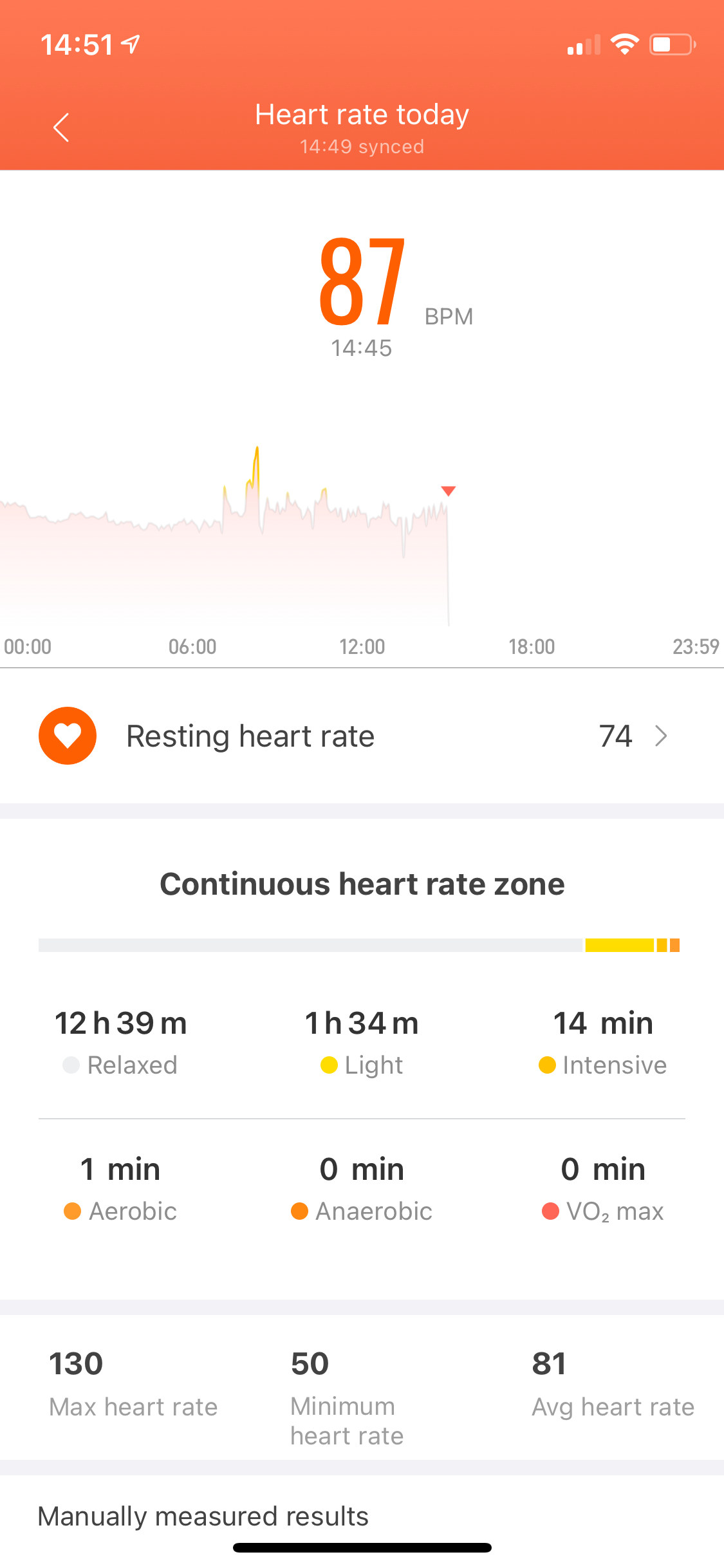
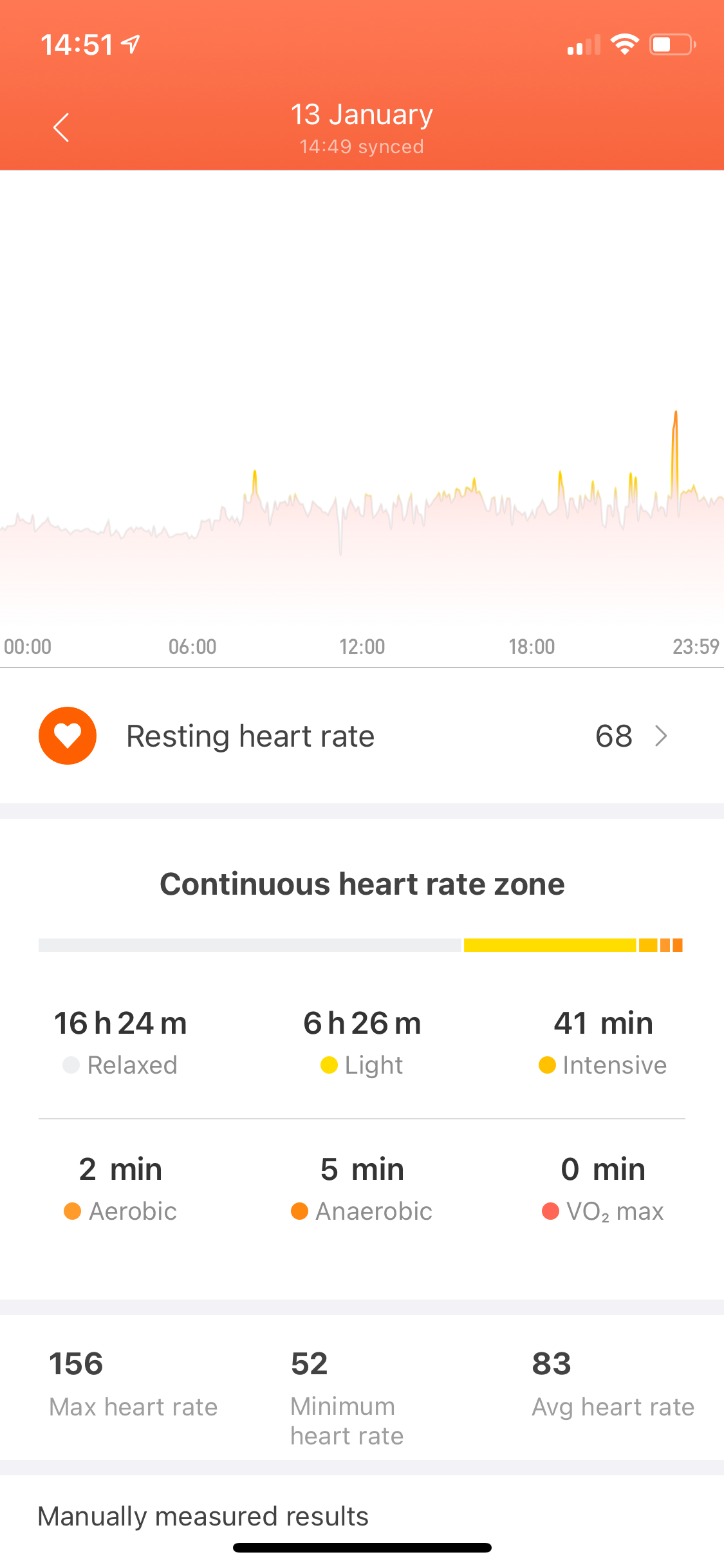
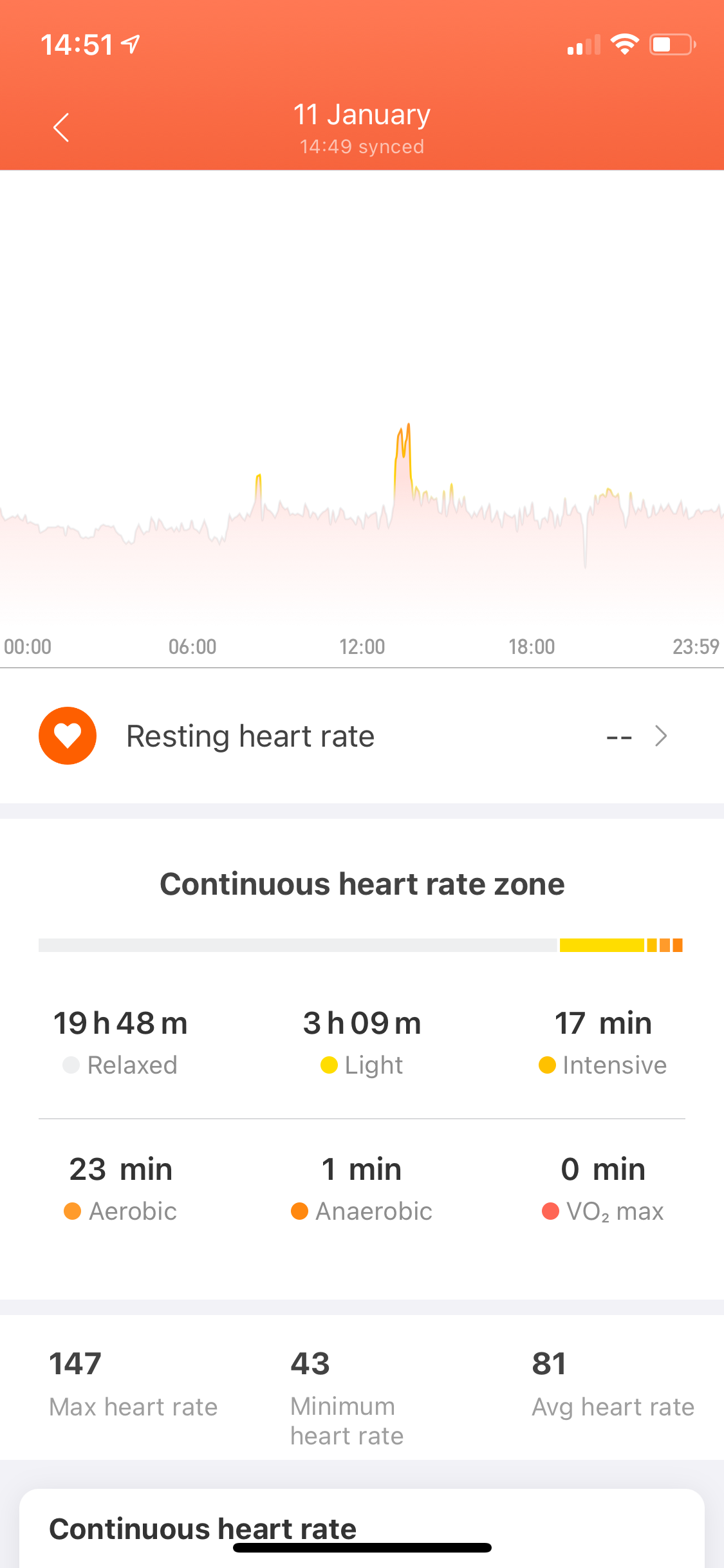
Personal Activity Intelligence (PAI)
PAI is a relatively new activity-tracking algorithm that awards points for elevating your heart rate, regardless of how you do it. The goal is to accumulate at least 100 PAI points in a week. Studies show that at that level of activity, the chances of heart disease is reduced by 25%, and an average of 5 years is added to your life expectancy.
The more intensive your exercise–ie, the faster your heart rate–the more points are awarded. The awarded points also depend on your age, sex, and resting heart rate. As you get fitter and your resting heart rate decreases, it becomes more difficult. That means you if go on a run with a friend, you may get different PAI points for the same activity. This is normal.
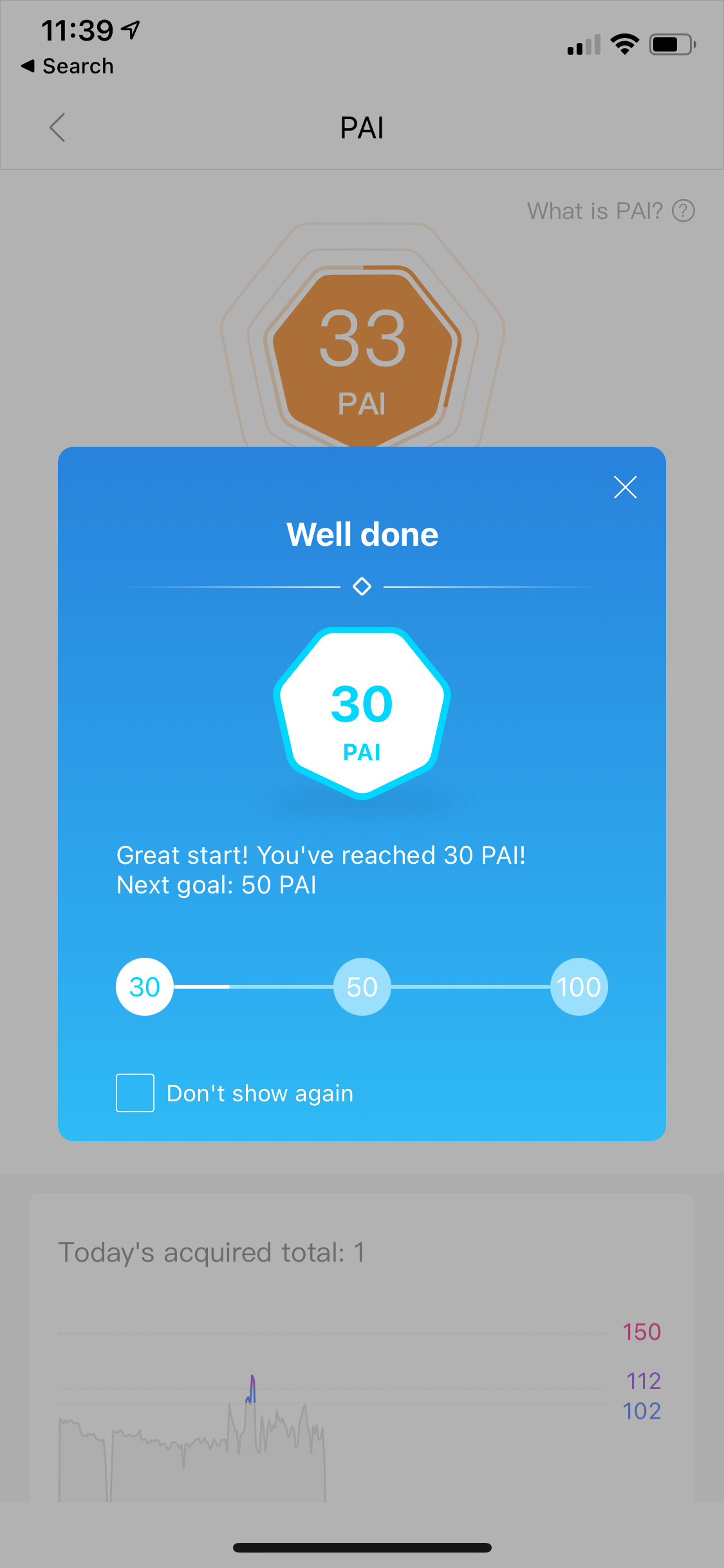
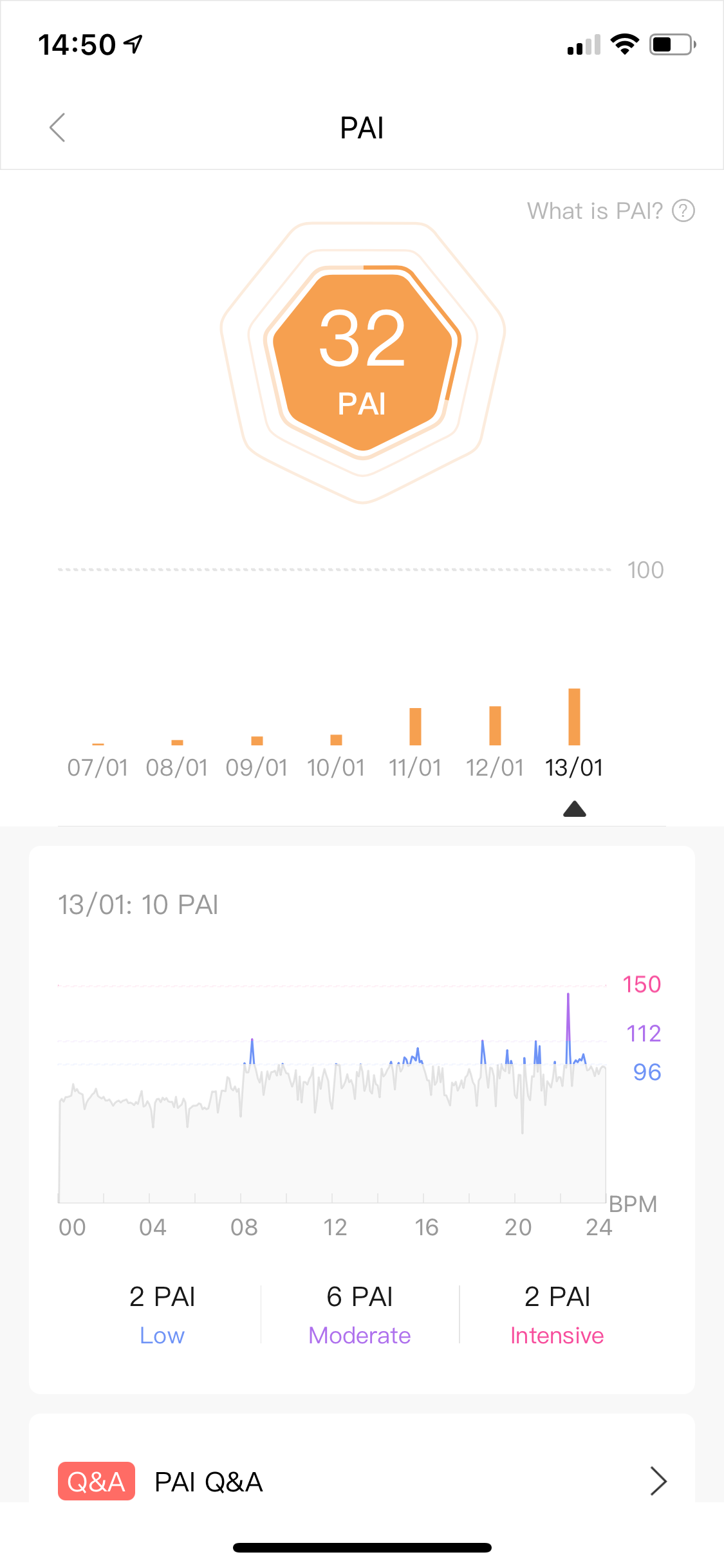
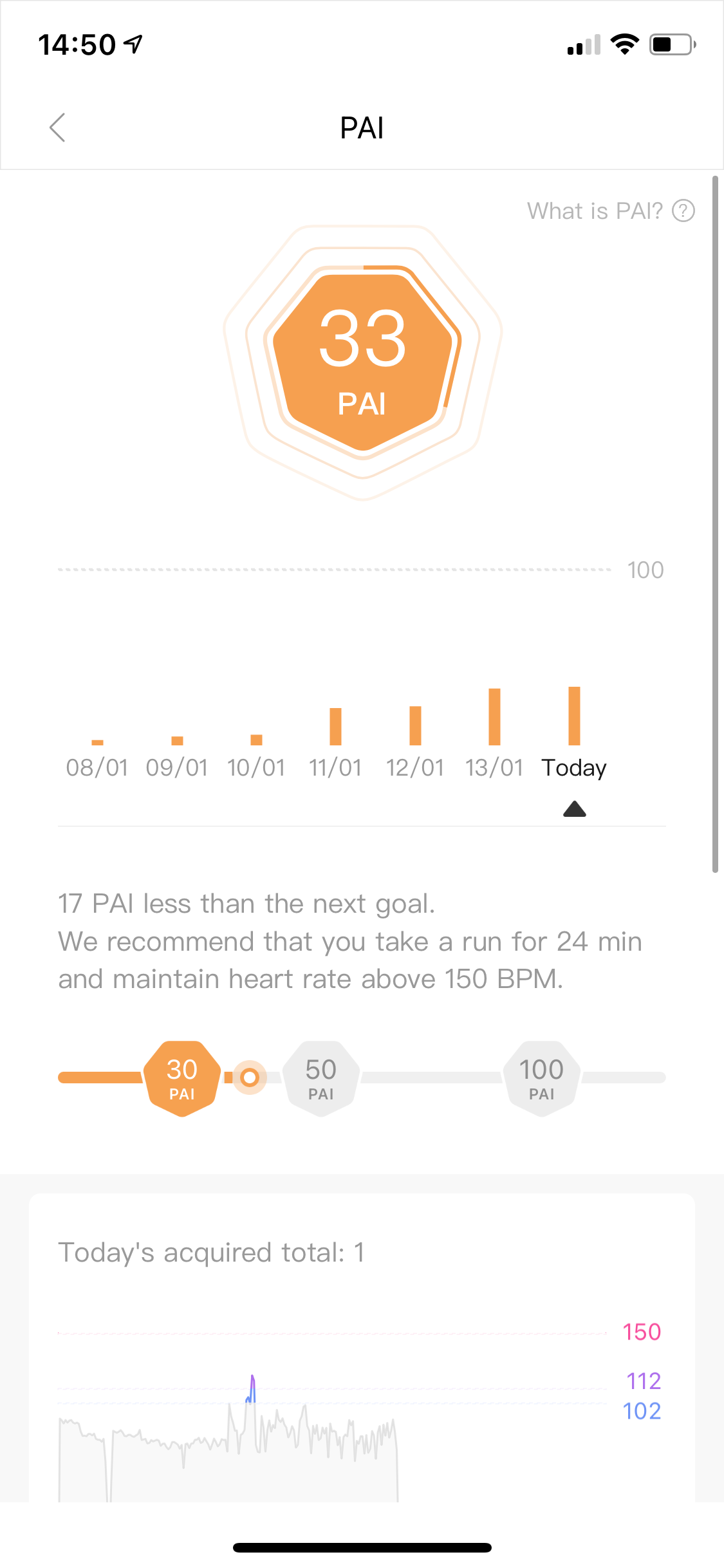
One great aspect of PAI is that it's calculated on a rolling weekly basis, so you can still have a rest day without feeling demotivated for not hitting a goal for the day. Any score gained over seven days ago will drop off, so your score is recalculated each day.
The real beauty of PAI is that it tracks and rewards everything you do, automatically. And I do mean everything. An intense day of housework and chores might not be on a traditional list of acceptable exercises, but if it's raised your heart rate then who cares? It'll still count toward the PAI. It may not count for a lot, but it's certainly better than having sat on your bum all day.
Enabling this feature requires continuous heart rate monitoring, but it's well worth the battery life trade-off.
For me, PAI is the killer feature. Especially during a global pandemic, when many of us aren't allowed out of the house, I find myself exercising mostly in VR. While certainly not as intensive as running, a 30-minute session of intense boxing in FitXR awards about 15 PAI points.
Sleep Tracking
I'll preface this section by mentioning that I don't have another device to compare results to, but broadly speaking, I believe the sleep tracking aspects of the Mi Band 5 to be accurate.
It indicated a high sleep score when I felt well-rested, and the times when I had woken prematurely or got up in the middle of the night were depicted on the sleep graph at the appropriate times and duration. Overall sleep duration was also as expected.
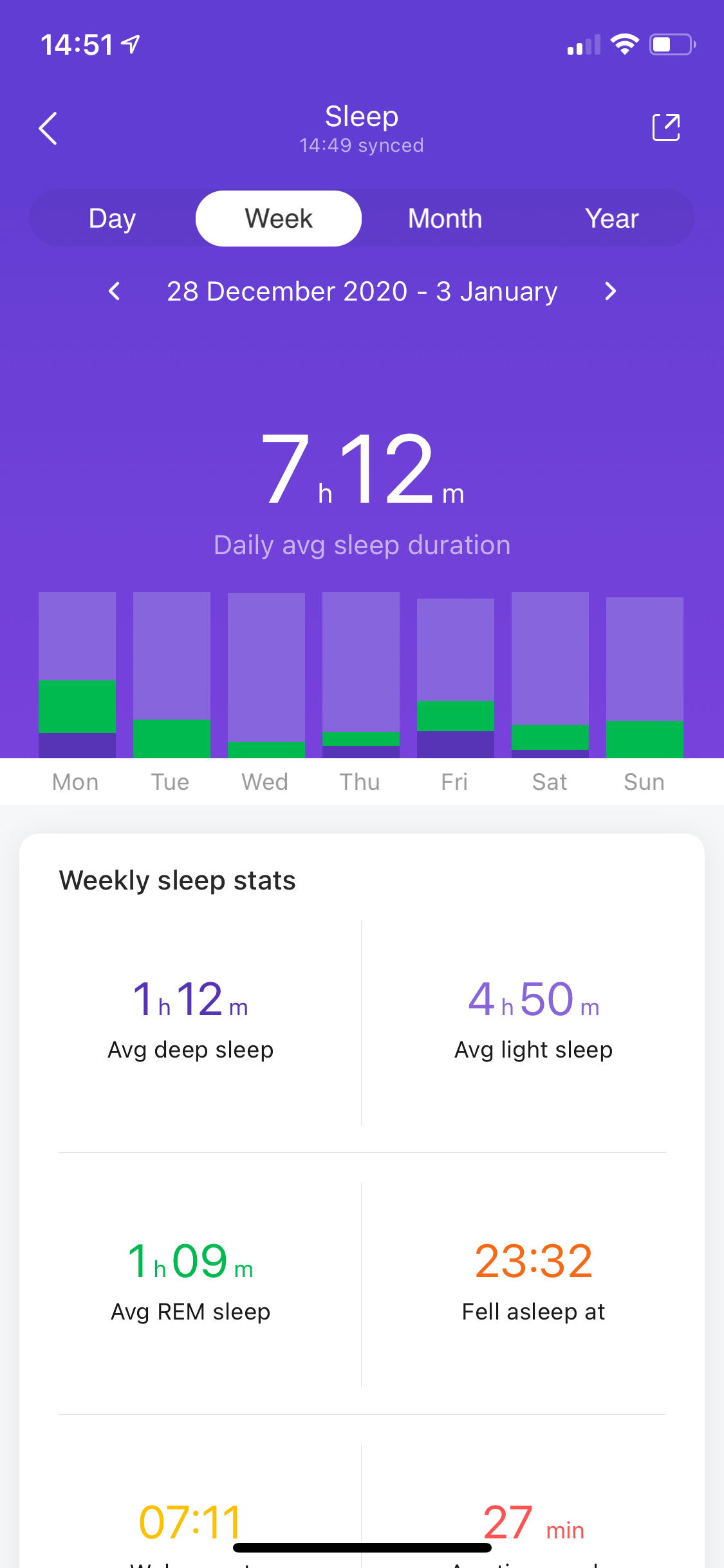
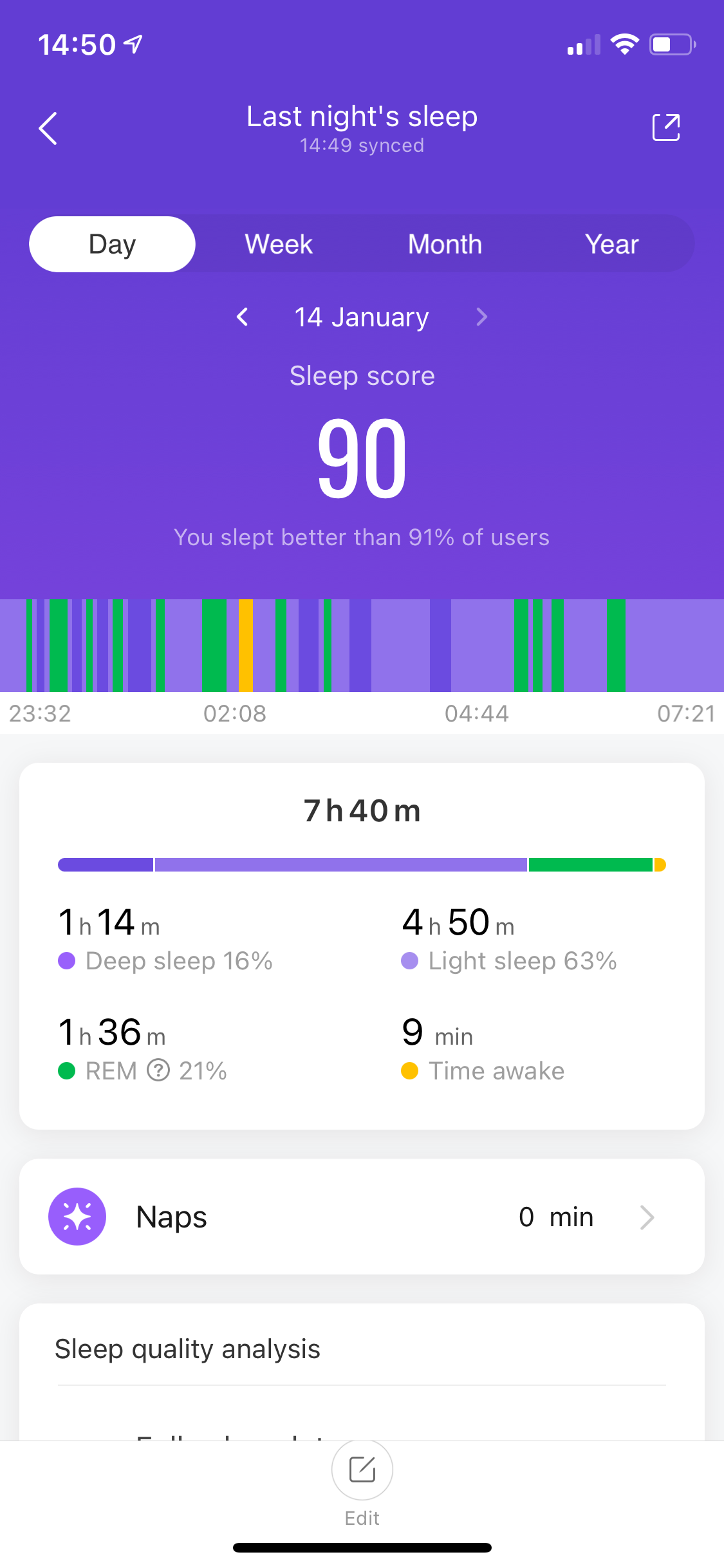
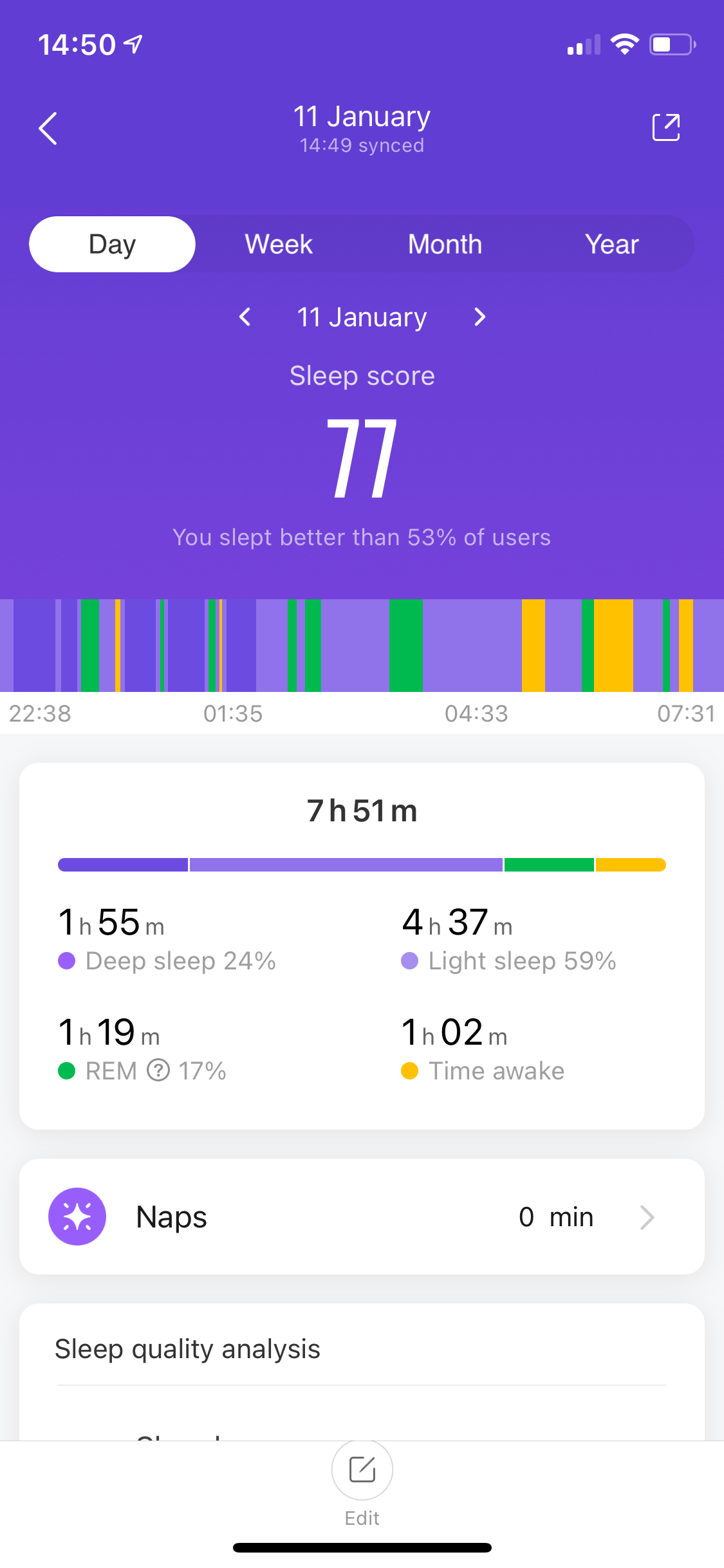
The combination of heart-rate sensing and movement data should result in reasonably accurate light and deep sleep cycles, too, but the rapid-eye-movement (REM) data may need to be viewed with a particularly large grain of salt. REM sleep (aka dreaming) is notoriously difficult to ascertain, and really needs electroencephalography (EEG) sensors on a headband to accurately detect.
For the best sleep tracking results, you'll need to enable the "sleep assistant", which as far as I can tell just means continuous heart rate monitoring but at night. That's not to say the sleep tracking data is useless without that enabled, but if you're reading this then it's probably something you care about, and would want the highest accuracy for.
Stress Tracking
Lastly, the Mi Band 5 claims to track stress using a derived measurement of heart rate variability. The more your heart rate rapidly changes the more stressed you are. Our resident wearables expert Kannon tells me this is a highly inaccurate depiction of physiological stress level, given it's entirely derived from heart rate PPG sensors.
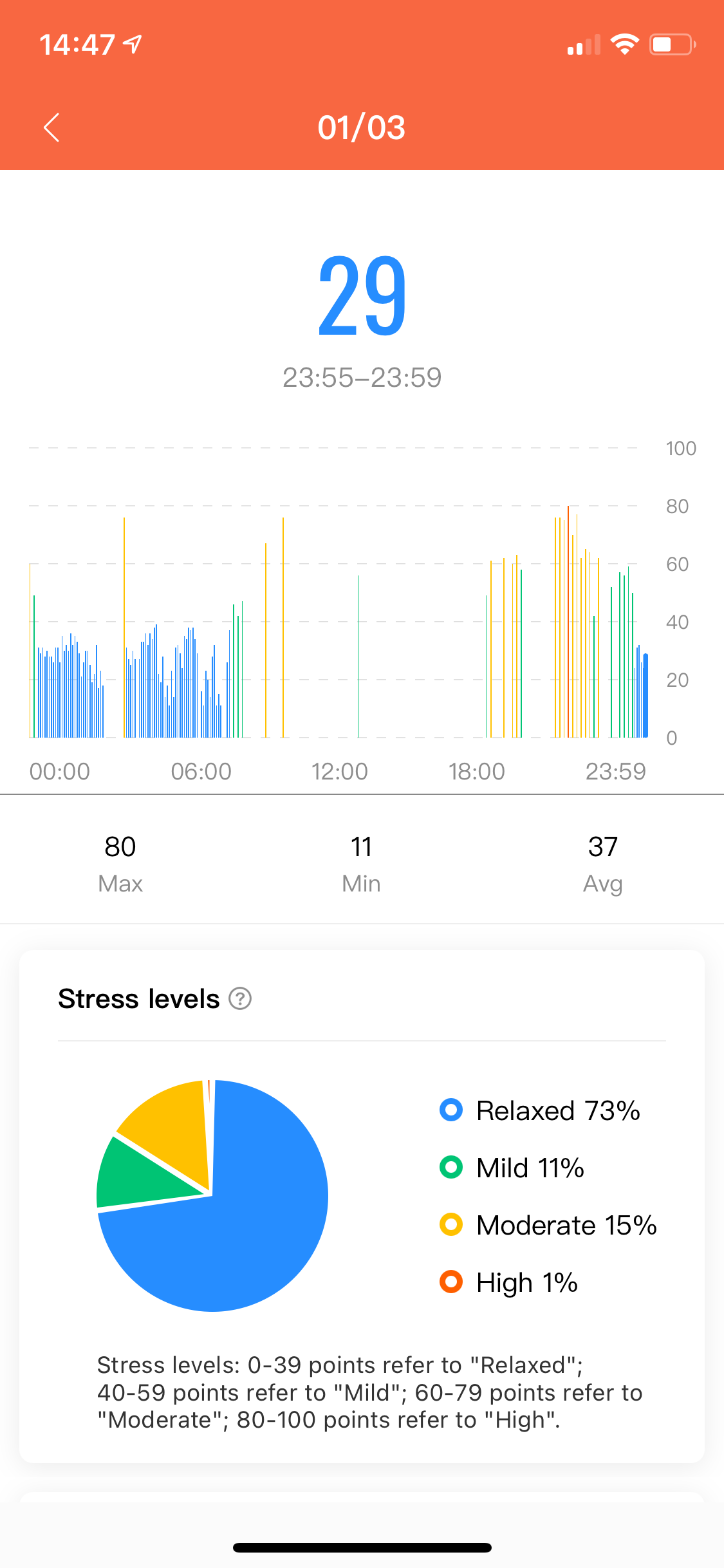
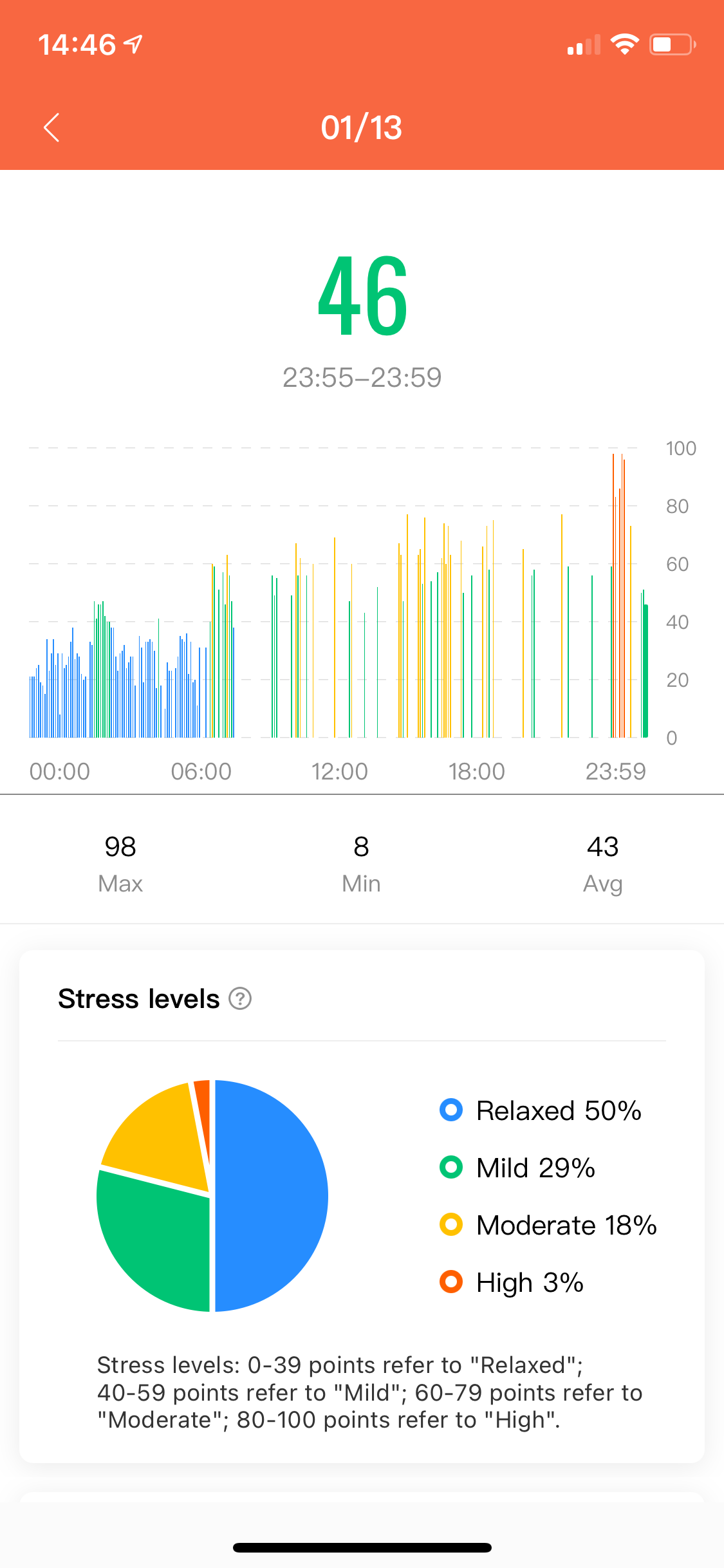
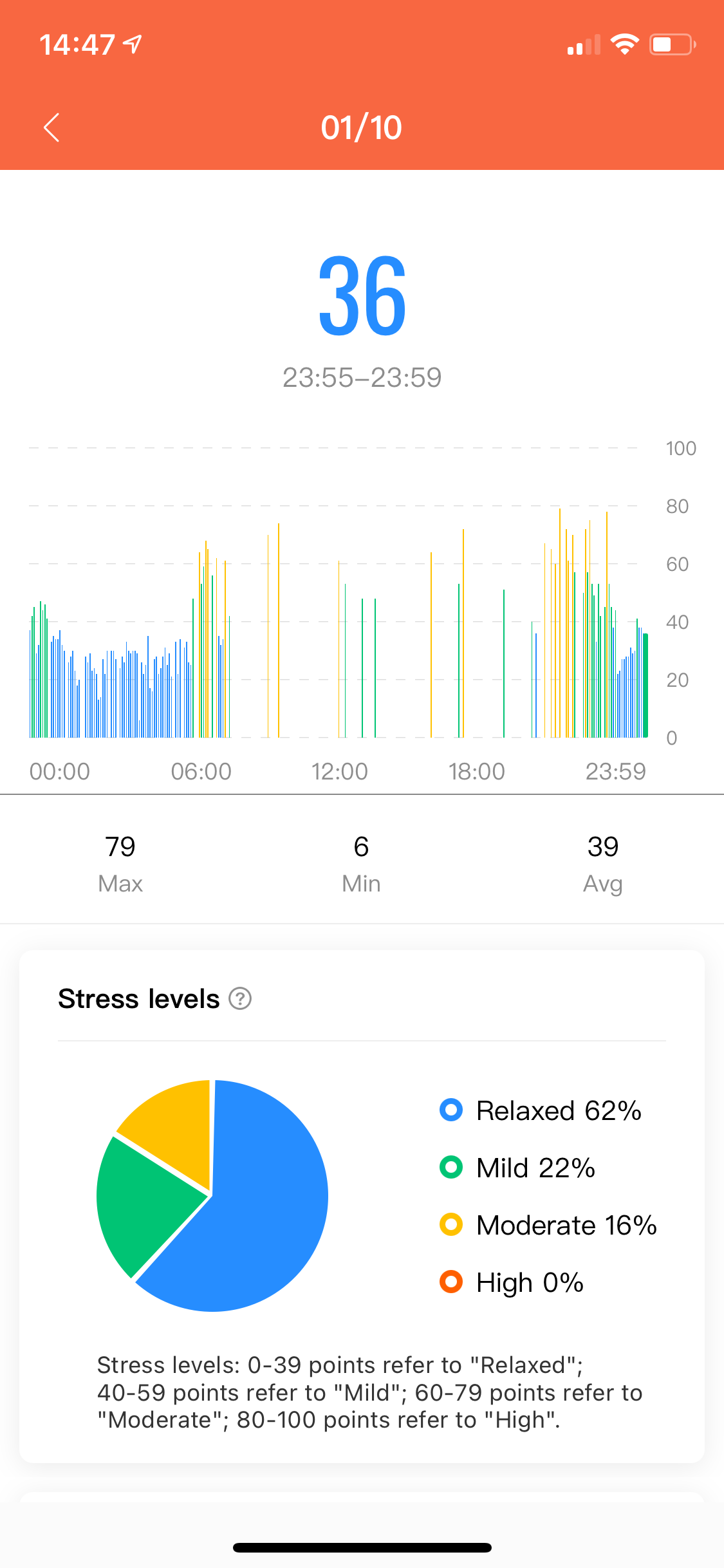
Anecdotally though, whenever I've felt emotionally stressed in the past month, I have looked at the Mi Band and found it agreed. At other times, it seems to correlate with intensive activity. I don't know why recording this review resulted in "Moderate" stress levels, nor is it clear why there's no stress data recorded for vast chunks of some days.
In other words, I think the stress feature might be mostly nonsense.
But regardless, this is probably the least useful data offered by the Mi Band anyway. Unlike resting heart rate or overall activity levels, stress is usually something we are aware of and can take corrective action for.
Notifications
Perhaps the most underrated time-saving feature is the ability to forward smartphone notifications to the Mi Band display.
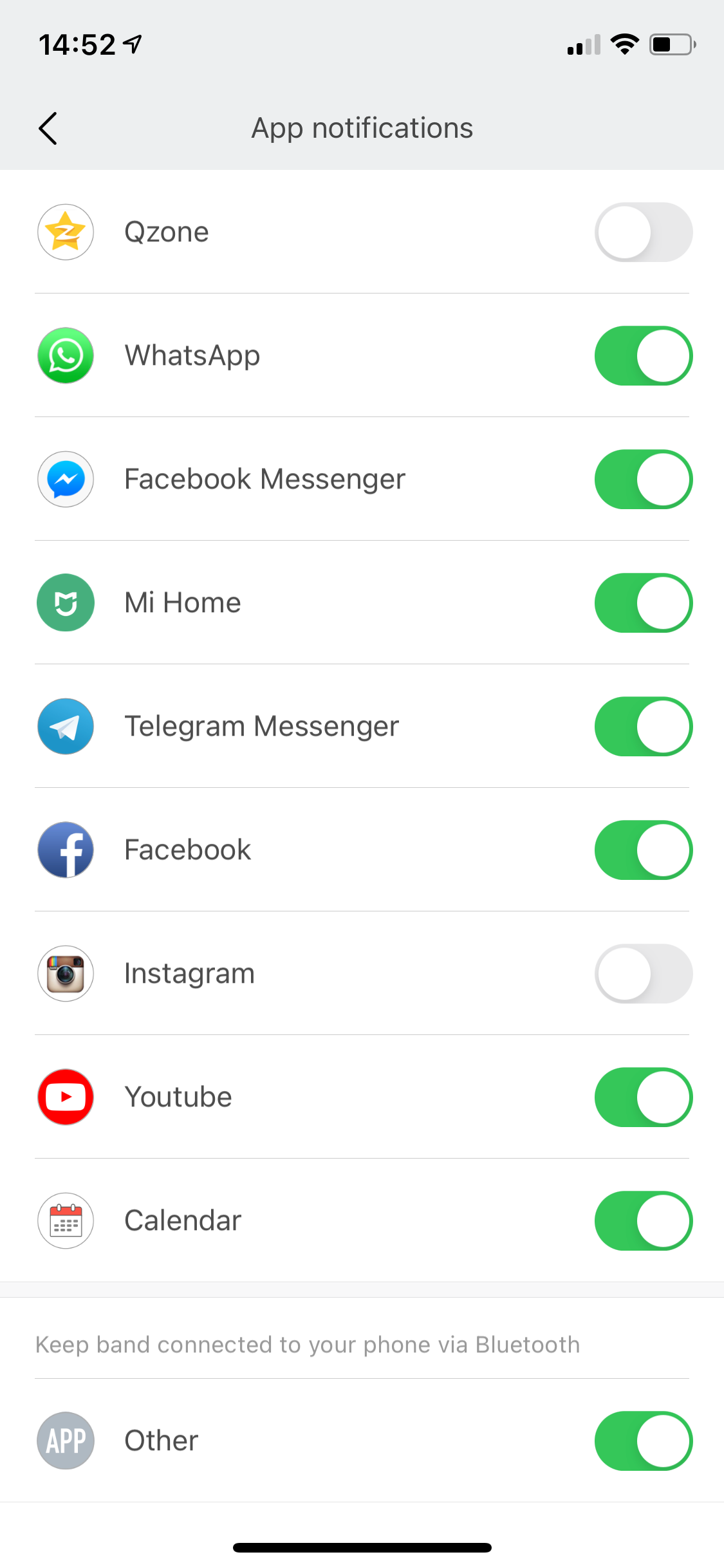
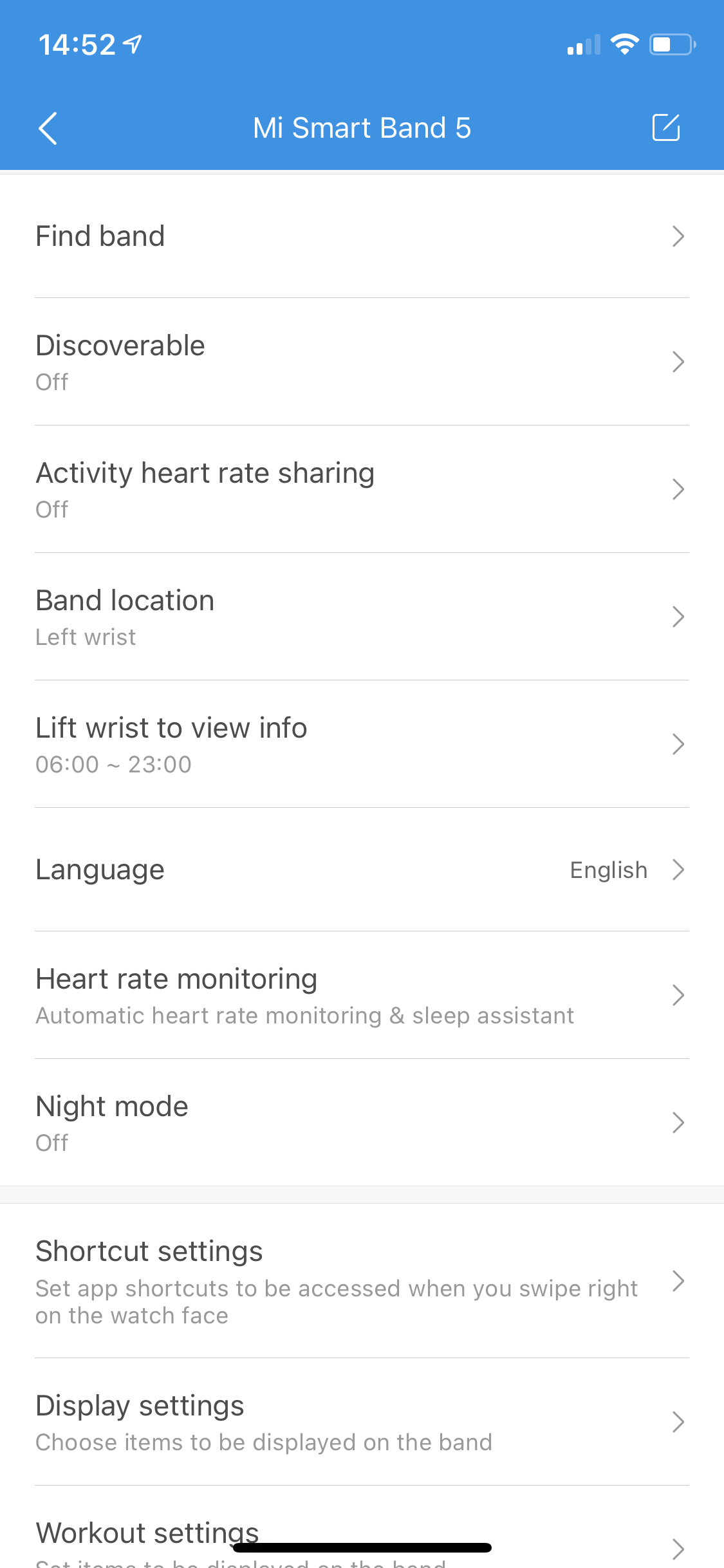

Like most of us, my phone is constantly pinging. But it's frustrating to delve into my pocket in order to check if that was an important Slack message from a colleague, only to find it was the BBC app deciding that the latest royal baby nonsense is Breaking News worthy of notifying the entire nation.
You won't be reading full emails like this, but the 80 characters or so that can be shown are more than enough to see the gist and what app it came from.
Battery Life
With heart rate checks at 10-minute intervals, I achieved two and a half weeks before needing to charge.
Enabling PAI and more accurate sleep tracking requires "continuous" heart rate monitoring (every minute), however, you can choose to enable only PAI or sleep tracking assistant, or both. With both enabled, I found the battery drained by 10% a day; or in other words, around 10 days before needing a recharge. For that level of granular data, I think 10 days is a great compromise.
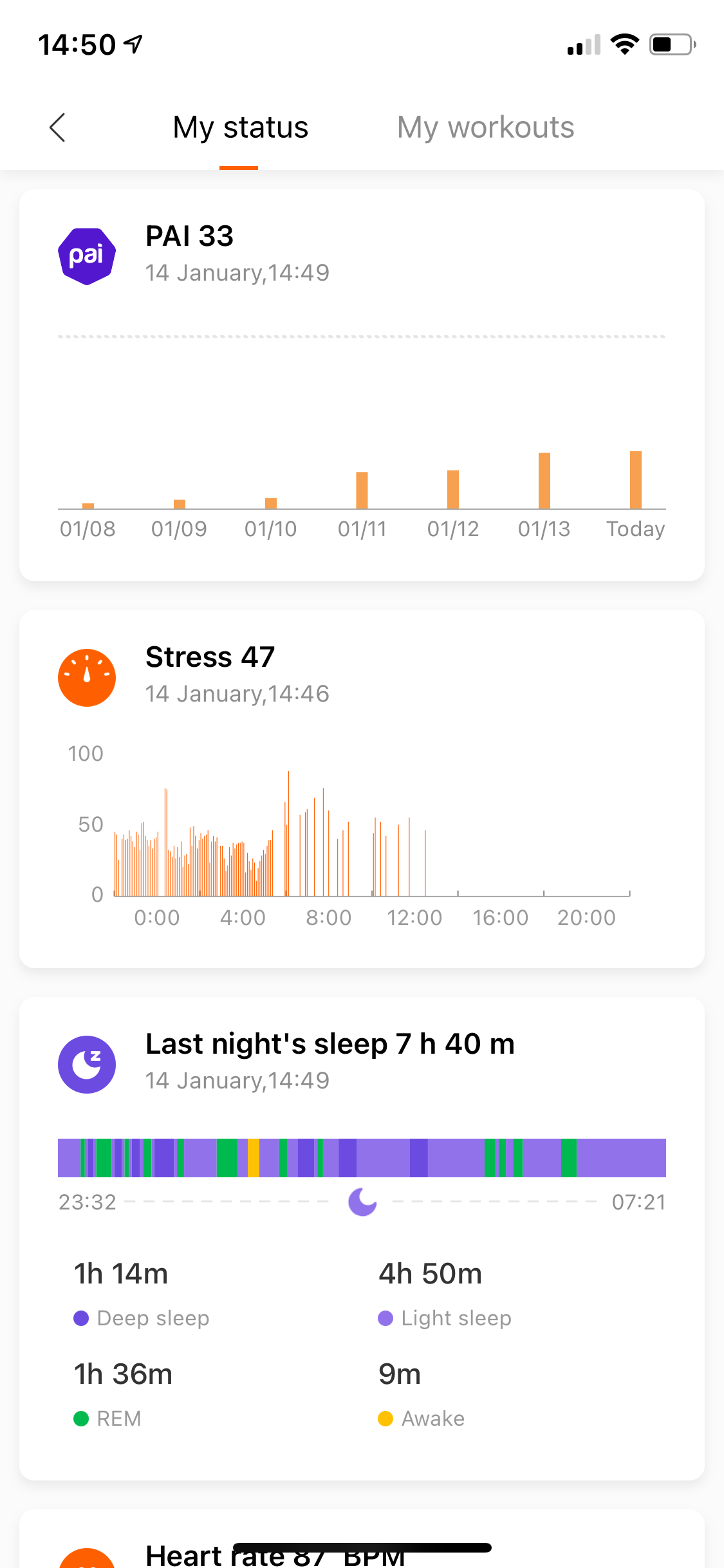
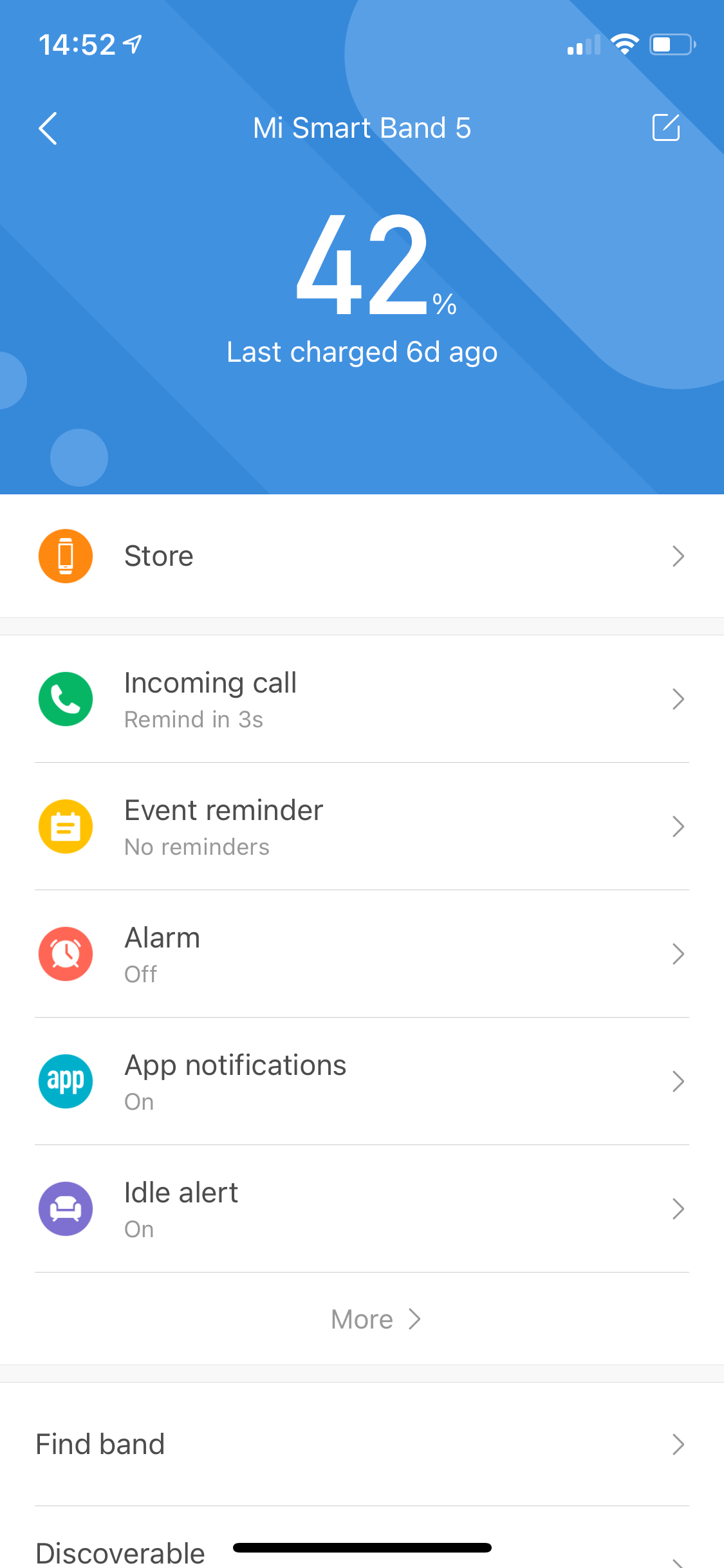
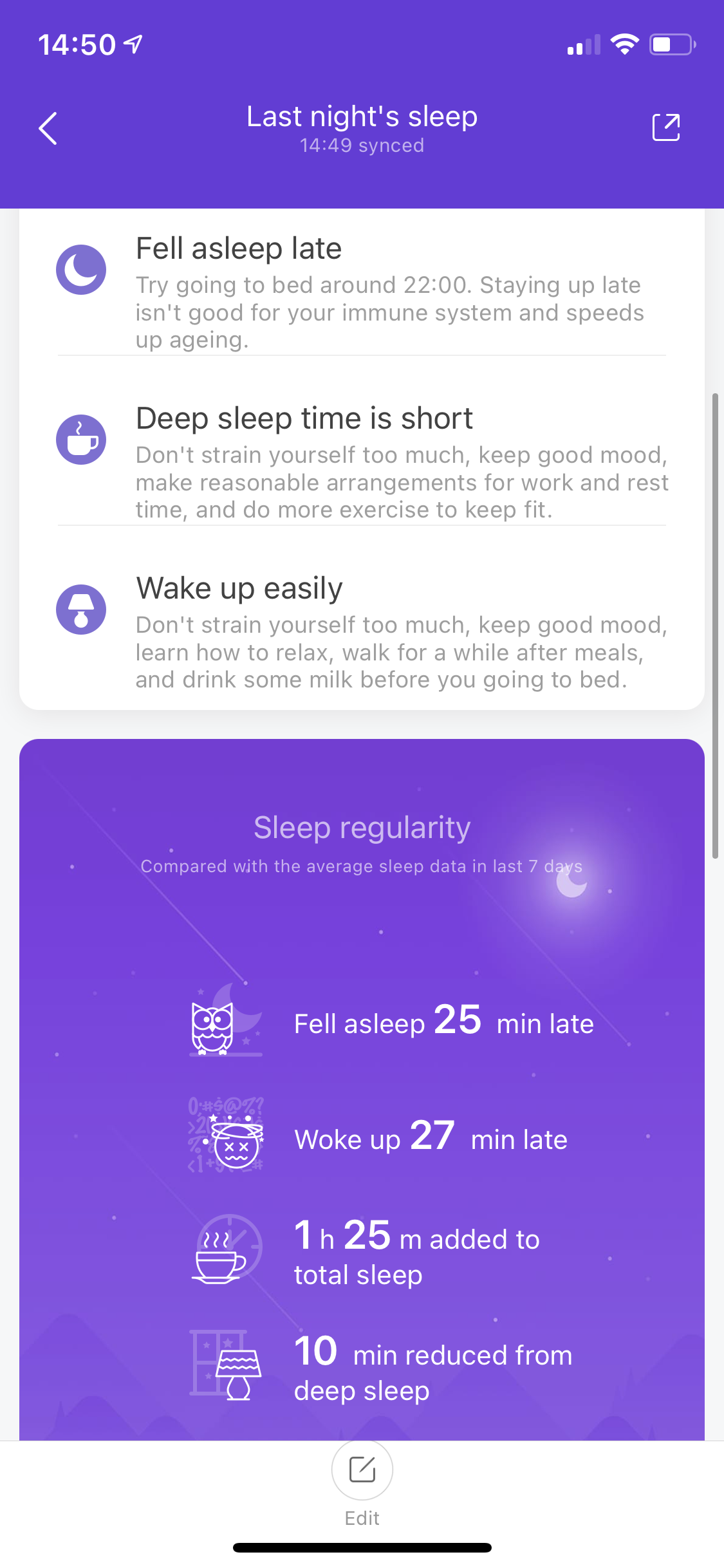
I should note that these figures include notifications being enabled, and lift-to-wake, which meant the Mi Band 5 buzzed at me around 40-50 times a day. Disabling notifications (or if you generally don't get that many) would likely extend your battery life further–but only by a little. The main battery draw is heart rate checks.
I didn't test with heart rate monitoring disabled completely, as that really defeats the point of buying this device. If you only want a simple step tracker, use your phone.
Apple Health
Unlike Fitbit, you don't need third-party hacks to export your Mi Band data into other services. Notably, Apple Health or the Google equivalent are supported (though I only tested Apple Health).
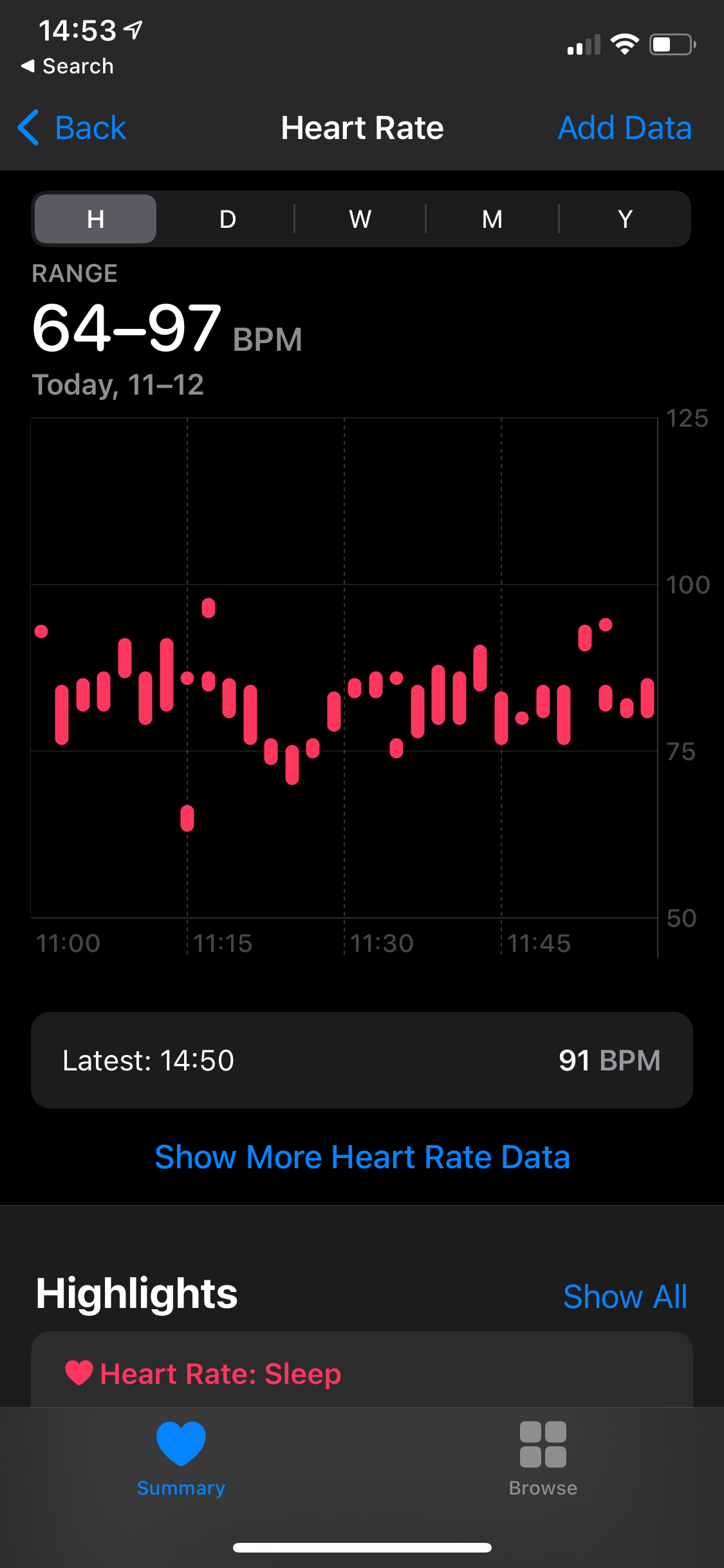
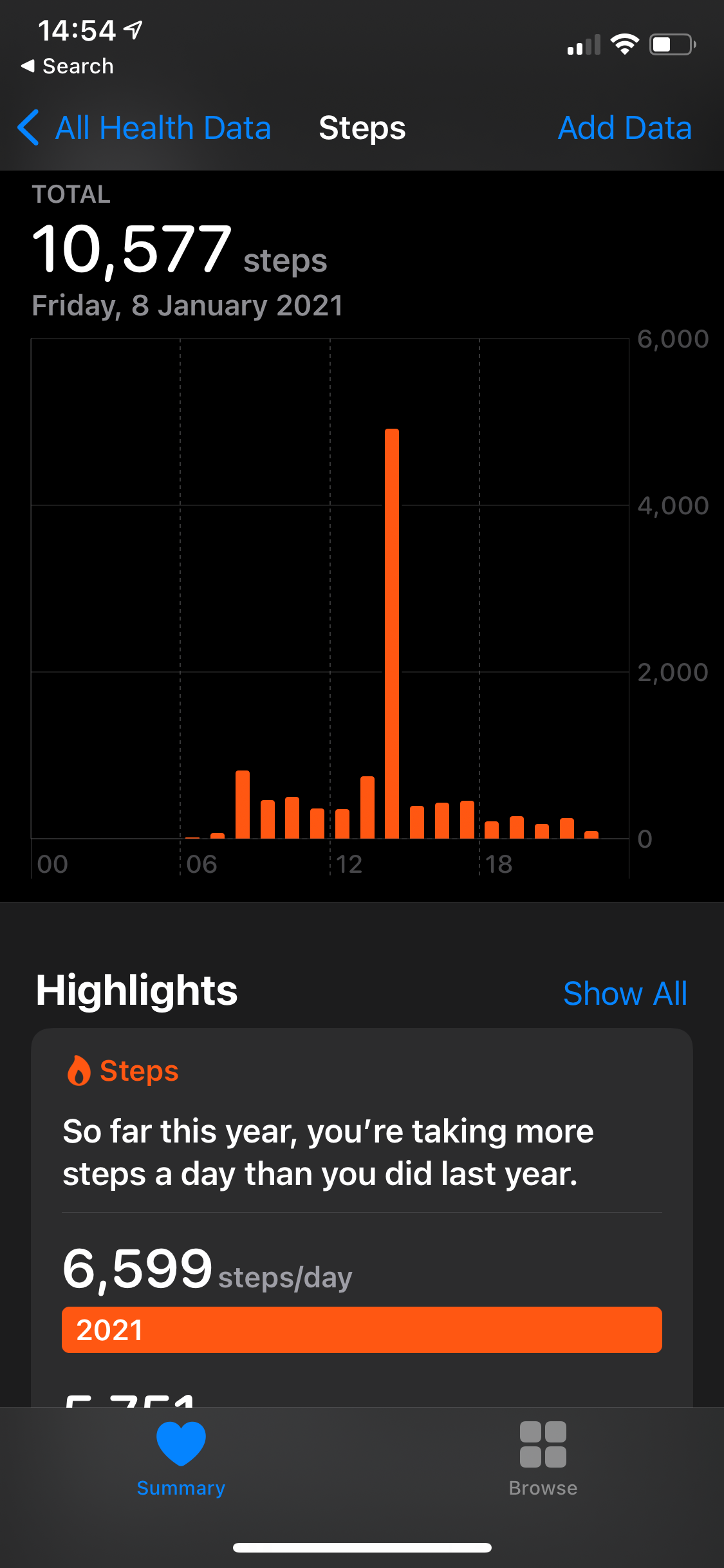
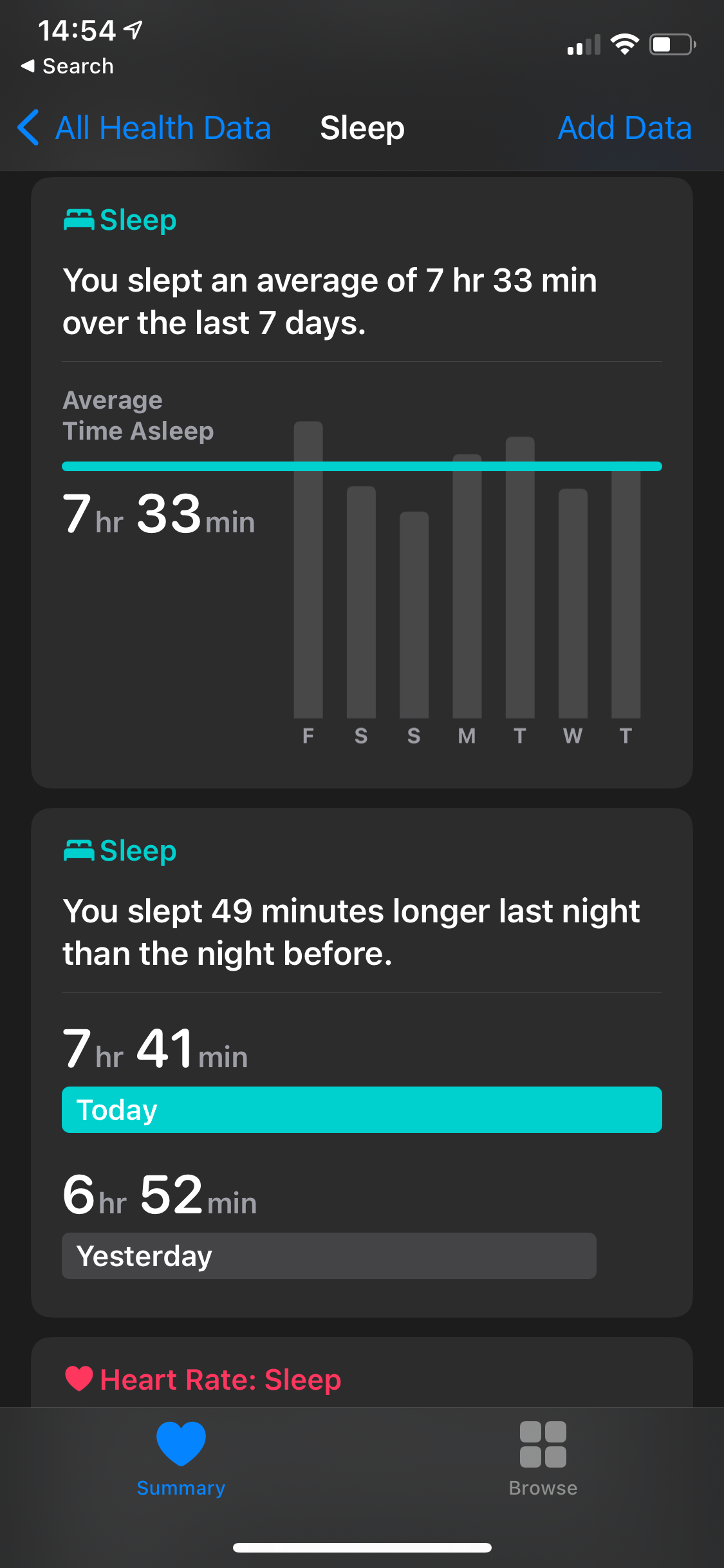
All of your sleep and heart rate measurements can be exported simply and automatically. This means you're free to move to a different tracker ecosystem at any point without losing historical data–or just to use an alternative interface to view your data, if you want. If you need to show your doctor your heart rate and they're only familiar with Apple Health, that's fine.
Should You Buy the MiBand 5?
If you're looking for something beyond a simple step tracker, but don't want to spend a ludicrous amount, we can highly recommend the Mi Band 5.
The step tracking, heart rate, and sleep data is accurate enough if that's all you want, but the PAI score is the killer feature that I think will benefit most of us. It's a simple and automatic fitness goal tracking system, perfect for those us who want to work out, but perhaps don't have a bicycle and can't run. PAI is also a weekly rather than daily goal, so it's forgiving to busy schedules. It's the perfect step-up from simplistic step tracking, either for those who can't get out to achieve those goals, or are already surpassing them.
While the Mi Fit app can record GPS along with any runs, the data comes from your phone rather than the Mi Band 5. If you need advanced metrics like GPS on the band itself, elevation, specialist apps, blood oxygen levels, or the ability to do NFC payments, you'll need to spend five to ten times as much. For most of us, the Mi Band 5 is the best budget wearable to help achieve our fitness goals.
The MiFit app isn't perfect though: the Friends tab is featured prominently at the bottom, but seems buggy. My wife and I were unable to add each other as friends, or anyone else in fact. No combination of QR code generating and scanning on either end worked, on either our home Wi-Fi or smartphone data. This is a minor complaint that doesn't affect any of the core features, but it would be nice to keep each other accountable.
One other minor note: there is an NFC version of the Mi Band 5 for sale. You can safely ignore it, as it doesn't work outside of China. You can't use the Mi Band 5 NFC features with Apple or Google Pay.

